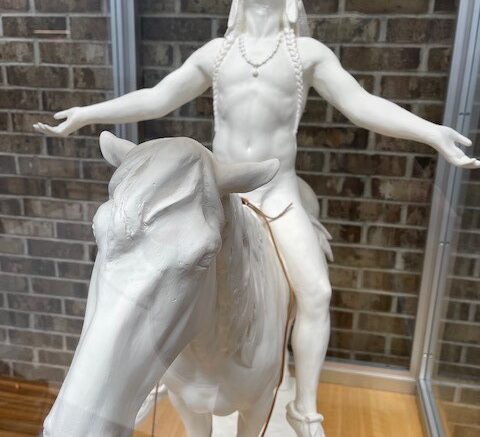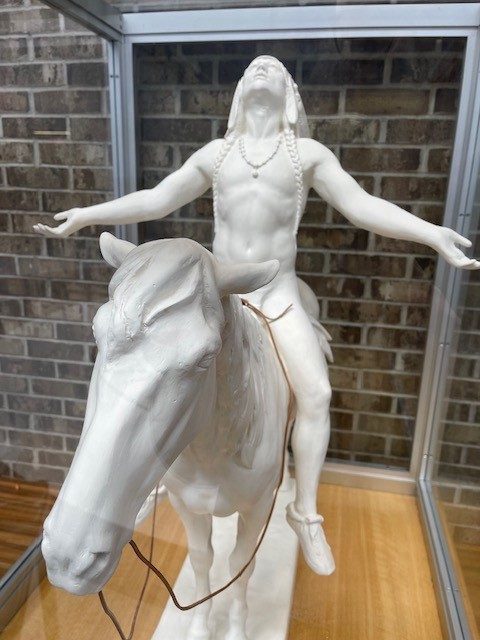Dear Editor,
While I’ve long been opposed to racial stereotypes being adopted by other cultures mainly for use at school sporting events, distinctions are to be made between brazenly offensive examples like the former Washington Redskins’ mascot and the desire to identify with a piece of fine art rooted in the history of one’s town.
To me the replica of the sculpture “Appeal to the Great Spirit” exemplified the spirituality of the Native American people. I saw beauty and reverence in it. Its placement in the OFA lobby was special because the original resides outside the Boston Museum of Fine Arts. Other replicas have been prominently displayed; at one time, one was even in the Oval Office.
Like many in our community, I saw the “Appeal to the Great Spirit” that serves as a logo of sorts for the school as separate from the issue of mascots. Its association with and use within our school was respectful. Now that I’ve learned more, I’ve changed my mind.
It wasn’t until this week (after serving the district as a teacher for over 50 years) that I learned that “Appeal” exists in the context of a series. It is the fourth and final installment of sculptures titled “The Epic of the Indian.” In other words, the story of the Indian. The sculptures are “A Signal of Peace” or “The Welcome” (1890); “The Medicine Man” or The Warning (1899); “Protest of the Sioux” or “The Defiance” (1904); and “Appeal to the Great Spirit (1908).”
Now, looking at the statue I see the prominent rib cage, an indication of lack of food. And I realize the fourth sculpture is the image of a Native American when all that he had owned and valued had been taken away from him. Previously I never asked myself what he was appealing to the Great Spirit for.
Even before the New York State Board of Regents decided to ban the use of indigenous culture as mascots, controversy surrounded this sculpture. In 2019 the Museum of Fine Arts started a discussion of the sculpture including Native Americans. Placards placed around the sculpture conveyed a variety of opinions.
One said, “I see a proud and defiant man ready to fight for his people and culture.”
Another said, “I hate it and usually use the back entrance to avoid it. It tells me the museum isn’t for Native people like me, but for white people and their false impressions of reality.”
A third said, “I see a perfect illustration of intent vs. impact: a well-meaning sculptor setting out to honor Native Americans has nonetheless perpetuated stereotypes about what Native Americans ‘look like’ and notions of them as ‘vanishing.’”
None of this is anything I thought of. Welcome, warning, protest and finally, a plea after enduring horrific loss. I ask why any school district would want to be identified by an image that brings to mind what European colonizers did to the indigenous people of this land? To perpetuate the idea that indigenous people no longer exist? And that all they are is a defeated people? Are these the messages we wish to perpetuate as a community?
I don’t think so.
Sincerely,
Joan Davis
Owego, N.Y.




Be the first to comment on "Letter: Context is King"